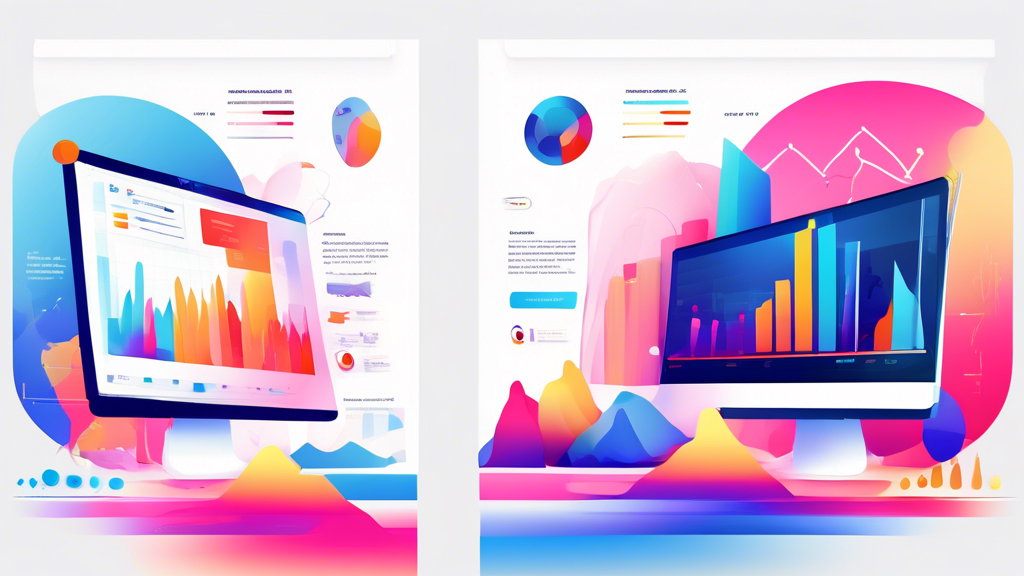Introduction: Unlocking the Power of A/B Testing for Your Website
Have you ever found yourself staring at your website, wondering how you can squeeze out more conversions, enhance user engagement, or simply make your site more appealing? Enter the realm of A/B testing – the not-so-secret weapon of digital marketers and web developers alike that could very well be the answer to your online quandaries. By comparing two versions of a webpage to see which one performs better, you’re essentially letting your audience decide what works best. It’s like having your cake and getting to eat it too, except in this case, the cake is your website, and eating it means achieving your business goals. But let’s not get ahead of ourselves – mastering A/B testing is an art and science that requires a bit more than just comparing chocolate with vanilla.
Understanding the Basics of A/B Testing
A/B testing, also known as split testing, is a method of comparing two versions of a webpage or app against each other to determine which one performs better. Typically, these variations, labeled as A and B, are shown to users at random, and statistical analysis is used to determine which version is more effective in achieving a predetermined goal – be it increasing click-through rates, enhancing form completions, or any other metrics important to your website’s success.
The Foundation of Effective A/B Testing
Before diving headfirst into the testing pool, it’s paramount to lay a solid foundation. This involves clearly defining your goals, understanding your audience, and deciding on what exactly you wish to test – be it headlines, call-to-action buttons, or page layouts. Like baking a perfect loaf of bread, the ingredients aren’t all that matter; it’s also knowing the right proportions and conditions that lead to tantalizing results.
The Step-by-Step Guide to A/B Testing
1. Identify Your Goal
What do you aim to improve? Whether it’s increasing newsletter sign-ups or boosting sales, having a clear goal is critical. This is your recipe for success, ensuring you know what you’re baking in the first place.
2. Choose What to Test
From images to headlines to button colors, figure out what changes could potentially influence your desired outcome. Remember, even the seemingly inconsequential elements can sometimes hold the key to significant improvements.
3. Create Your Variants
Here’s where you bring your hypothesis to life. Whether it’s version A with a red button or version B with a green one, ensure that the variations are ready for the battle of the clicks.
4. Run the Test
Utilize A/B testing tools to serve the different versions to your audience and collect data on their performance. This phase is akin to watching dough rise – it requires patience and a keen eye on the process.
5. Analyze the Results
Once the test is concluded, it’s time to dive into the data. Which version achieved the goal more effectively? Did the green button bring home the bacon, or was the red one the crowd’s favorite? Analysis will reveal the winner.
Incorporating Advanced A/B Testing Strategies
Once you’ve mastered the basics, stepping up your A/B testing game involves looking into more sophisticated strategies. These might include testing more than two versions, multivariate testing, or segmenting your audience for more nuanced insights. Imagine not just comparing different cakes but also experimenting with ingredient combinations, cooking times, and presentation styles – all to see which delights the palate most.
The Role of A/B Testing Tools
Navigating the waters of A/B testing is made vastly simpler with the right tools. From Google Optimize to Optimizely, there are numerous platforms designed to make setting up, running, and analyzing tests as straightforward as whisking eggs. The key is choosing the one that best fits your needs, like picking the right kitchen tool for the job.
Common Pitfalls to Avoid in A/B Testing
While A/B testing can lead to significant improvements, it’s not without its traps. These can range from testing too many elements at once, leading to inconclusive results, to making decisions based on insufficient data. It’s akin to pulling a cake out of the oven too early – patience and precision are paramount.
Conclusion: The Sweet Spot of Website Optimization
Mastering A/B testing is an ongoing journey, filled with learning, experimentation, and, most importantly, improvement. By understanding the basics, following a structured process, and leveraging the right tools, you can turn your website into a high-performing marvel that meets both your and your audience’s needs.
And remember, the world of web optimization is like a box of chocolates; you never know what you’re gonna get, but with A/B testing, at least you can pick your favorites. Now, with all this talk about cake and chocolate, it’s time to feed not just your curiosity but also your website’s potential.
So, if you’re looking to cook up a storm in the digital realm and optimize your website to perfection, look no further. Visit starmetaversegeorgia.com for all your web development needs. Let’s bake a difference together!

Comments are closed